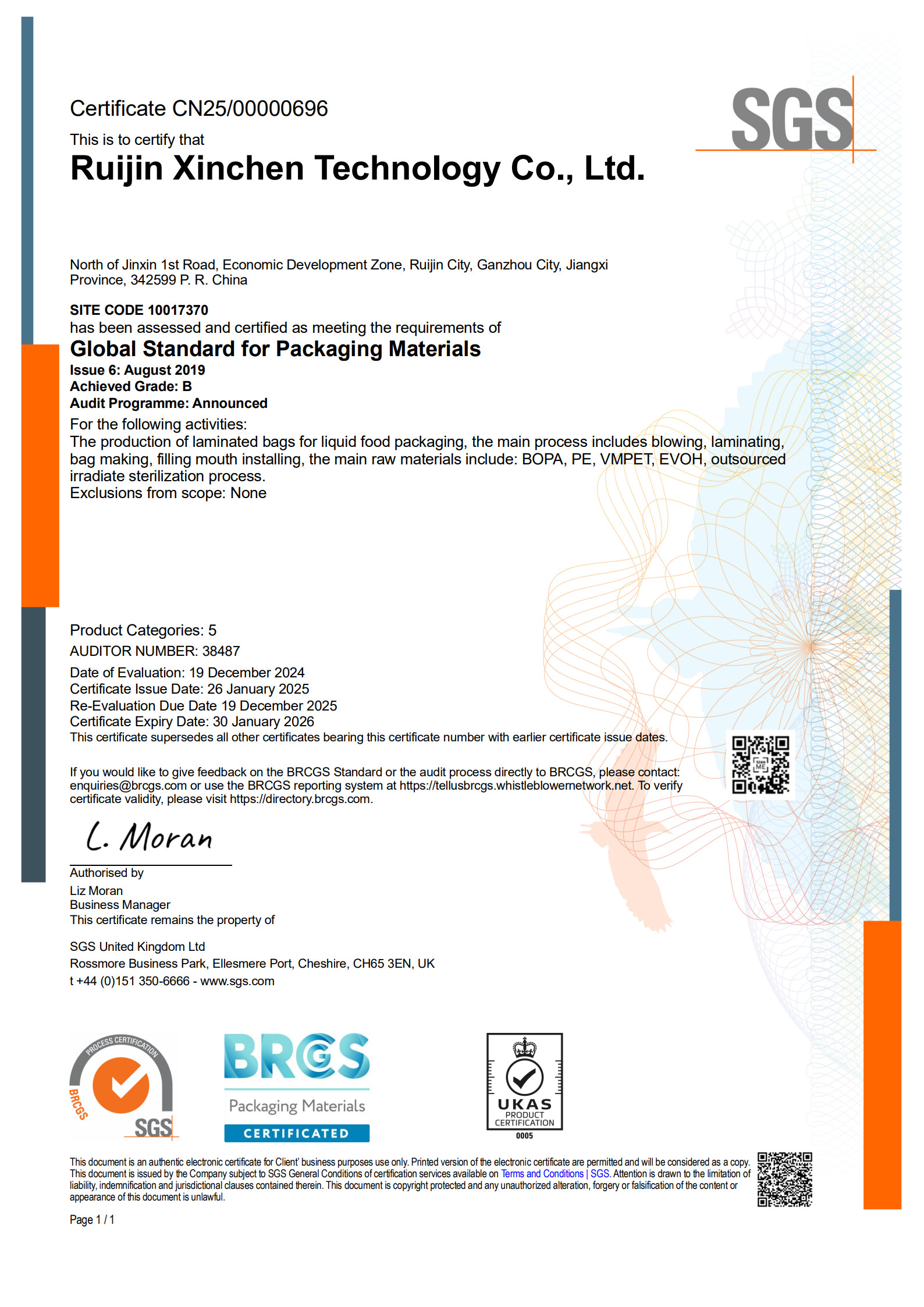
Products Integration
12+ Industrial Experience
Export To Over 35 Countries
7*24 Hours Customer Service
Introduction In today's packaging industry, with consumers' ever-increasing dema...
READ MOREIn the modern consumer goods market, soft liquid packaging bags have gradually b...
READ MOREGlobal Concern for Food Packaging Safety In recent years, the safety of food pac...
READ MOREThe Core Value and Industrial Significance of Aseptic Bags Aseptic Bags, with th...
READ MOREIn the modern liquid packaging industry, the Bag-In-Box Liquid Valve, as a highl...
READ MOREWith increasing global demands for food safety, pharmaceutical storage and trans...
READ MOREIn the process of manufacturing and packaging Aluminum Foil Laminated With Dispenser Aseptic Bag, ensuring sterility is crucial because it directly affects the quality and safety of the product.
1. Production environment preparation
Production line cleaning: Before production begins, the entire production line must be thoroughly cleaned and disinfected to eliminate potential sources of microbial contamination. This usually includes using high-efficiency cleaners and disinfectants to wipe and rinse the production line multiple times.
Aseptic environment: The production area should be set up as a sterile environment, and the microbial content in the air should be ensured to meet the minimum standard by installing equipment such as air filtration systems and ultraviolet disinfection lamps. All items entering the sterile environment must be thoroughly disinfected to ensure complete sterility. This usually includes the use of high-temperature steam sterilization, radiation sterilization or chemical disinfection. Items should be properly stored after disinfection to avoid re-contamination. In a sterile environment, it must be ensured that there are no microorganisms in the air. Therefore, it is necessary to filter out bacteria, viruses and other microorganisms in the air through an air purification system. The air purification system should be efficient and reliable and be able to continuously provide clean air.
2. Material selection and processing
Material selection: Select aluminum foil and other laminated materials that meet food hygiene requirements to ensure that the material itself does not carry any harmful microorganisms. At the same time, the material must be kept dry, clean and sterile during storage and transportation.
Material pretreatment: Pre-treat the aluminum foil and other laminated materials, such as cleaning, drying, disinfection, etc., to eliminate microorganisms that may exist on the surface.
3. Aseptic control during production
Printing and lamination: During the printing and lamination process, it is necessary to ensure that the ink and glue used meet food hygiene requirements and avoid any possible microbial contamination throughout the process. At the same time, regularly clean and disinfect the printing and lamination equipment.
Slitting and bag making: During the slitting and bag making process, the equipment must be kept clean and sterile. The aluminum foil laminated material after slitting should be packaged immediately to avoid contact with the external environment. During the bag making process, it is necessary to ensure that the seal is firm and there is no leakage to prevent microbial invasion.
Dispenser installation: When installing the dispenser on the aluminum foil laminated bag, it is necessary to ensure the sterility of the dispenser itself and avoid contact with the external environment during installation.
4. Aseptic operation during packaging
Packaging equipment: The packaging equipment needs to be cleaned and disinfected regularly to ensure that no microorganisms are introduced during the packaging process. At the same time, the equipment should have good sealing performance to ensure that the aluminum foil laminated bag after packaging can be completely isolated from the external environment.
Packaging operation: The packaging operation should be carried out in a sterile environment, and the staff must undergo rigorous training to master the correct packaging methods and aseptic operation skills. During the packaging process, the sterility of the aluminum foil laminated bag and the dispenser must be ensured, and contact with the external environment must be avoided.
Post-packaging processing: Visually inspect the packaged aluminum foil laminated bag to check for appearance defects such as damage, stains, and bubbles. Ensure that the seal is complete, there is no leakage, and the dispenser is firmly installed. Perform sterility testing on the packaged product, which usually includes methods such as microbial culture and microbial counting. If microbial contamination is detected, immediate measures must be taken to isolate and investigate, find out the source of contamination and take corresponding corrective measures. Test the sealing performance of the packaging bag to ensure that the bag will not leak or break during storage and transportation. This can be done by pressure testing, water immersion testing, etc.
5. Quality Control and Monitoring
Quality Control: Throughout the production process, a sound quality control system must be established to conduct strict testing and evaluation of raw materials, semi-finished products and finished products to ensure that the products meet relevant standards and requirements.
Microbial Monitoring: Regularly conduct microbial monitoring of the production environment, equipment and products to promptly detect and resolve potential microbial contamination problems.


+86-15779056622

